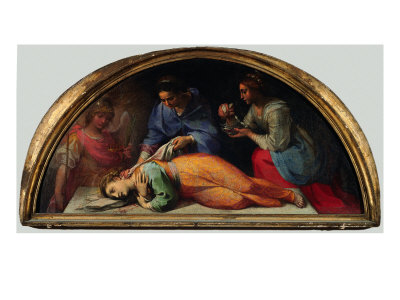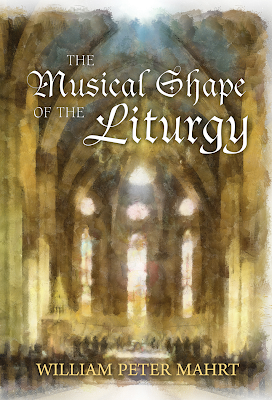The new translation of the General Instruction changed the translation of the Latin word “cantus” from song to chant. This led to a flurry of questions to the liturgy office US Conference of Catholic Bishops.
Perhaps musicians had a sudden sense that there was some appointed music that they were supposed to be singing that they weren’t singing. Perhaps, many wondered, there is more to Catholic music at Mass than just picking four hymns out of a commercially produced product and using them as filler music? Perhaps there is something serious and substantive associated with singing at Mass?
Well, the USCCB took on the question and gave the following Q&A in the January 2012 bulletin of the liturgy office.
Does the use of the word “chant” in the Roman Missal forbid hymnody during the Entrance and Communion processions?
No, the use of the word “chant” is a title for all sung pieces. The Secretariat has had numerous inquiries regarding the significance of this change in translation and its implications in liturgical practice. The 1985 edition of the General Instruction of the Roman Missal (GIRM) explained the “entrance song” in terms of antiphons, psalms, or another song. In the revised 2011 GIRM, no. 48 and nos. 86-87 now refer to the “Entrance Chant” and “Communion Chant,” respectively, and give as musical options: antiphons, Psalm chants, or other liturgical chants. While the 2003 GIRM rendered “chant” in lowercase, the new version has capitalized the word.
“Chant” (the translation of the Latin cantus) is intended here to refer not to a particular musical form (e.g., Gregorian chant), but as a general title for any musical piece. This is seen most clearly in the Missal itself. During the Good Friday celebration, the Missal has as a heading for one section, “Chants to Be Sung during the Adoration of the Holy Cross.” The “Chants” that follow include antiphons, the Reproaches, and a hymn. Similarly, in Appendix II, the Rite for the Blessing and Sprinkling of Water, a rubric states, “one of the following chants… is sung.” There follows antiphons and a hymn. From these examples, it is clear that the Missal in no way forbids the use of hymns or songs for the Entrance and Communion processions.
Now, what you might take away from that exchange is that there is nothing at all wrong with the 4-hymn convention, that musicians have no need to change anything that they are currently doing. Moreover, you would be left with the impression that there are not appointed chants for these times in the Mass but rather any song will do.
One supposes that perhaps the translators of the GIRM were just ignorant of the English language actually. Does iTunes famously charge 99 cents for a download of every song or “chant?” When you are shopping at the store and hear music by the Beatles or the Rolling Stones, do you think that those are really nice songs or “chants?” When Lady Gaga sings, do you think “that’s a very upbeat chant.”
Obviously, in English, these words are not interchangeable. If chant just means “any musical piece,” the translators must have been really mixed up and are probably incompetent to be in charge of such a translation.
Before we go on and explain the meaning and implications of the word chant here, consider how the phrasing of the question is tailored to match the question. The question is rendered as whether hymns are “forbidden” at the entrance, offertory, and communion. The answer is no. Of course hymns are not forbidden. And guess what? There is not a living soul on the planet who knows the first thing about the ordinary form of the Mass who would argue otherwise. Anyone who thinks hymns are forbidden by law is confused.
Nonetheless, that alone says nothing about what is preferred and its says nothing about hymns replacing the propers of the Mass. Now, there’s a phrase that doesn’t seem to be in the vocabulary of the writer of the above Q&A! The Mass does indeed feature proper texts for the entrance, the offertory, and the communion. You can read about them in the GIRM itself. The first three suggestions for music during these points of the Mass are that the proper text be sung.
And what is the music for these proper texts? It turns that such music does exist. It is found in the Graduale Romanum. This is the music that has been attached to the Mass since the earliest years. There is an entrance, an offertory, and a communion chant for every Mass of the liturgical year. Each has a special text and a special melody. That is an interesting fact. But one would know absolutely nothing about that reality by reading the USCCB’s answer to this question. In fact, you would be led to believe that there are appointed chants but rather that every time the GIRM referred to chant, it was kind of like a typo or translation error. It really means a “musical piece.”
And the appointed chant does in fact have an appointed text. Those texts are the proper texts. They are found in the Graduale and/or the Missale. You can find English chants based on Gregorian melodies. You can find hymns based on those texts. There are whole collections of sung propers in every form you can imagine. When you are singing them, you are singing the Mass texts. Surely that is better than singing any old “musical piece.” In fact, the GIRM clearly seems to favor the appointed text over some random hymn, which is why it repeatedly says to sing the chant.
Makes sense? Of course it makes sense. That does not mean: 1) that a hymn cannot be sung in addition to the chant, or that 2) a hymn cannot licitly replace the appointed text and chant. We know both of these things. This is not news. The news that the USCCB somehow failed to report is that chant actually means something substantive, historical, integral to the rite, and is currently available to be sung by any choir that seeks to sing the actual liturgy rather than just sing something or other.
What a missed opportunity!
But let’s address the paragraph from the USCCB in which the writer marshals evidence from the Missal to support that claim that chant means any musical piece. The chant called Crux Fidelis is traditionally sung during the veneration of the cross. That is a chant. That is in the Missal. It is real chant, with a real history. It is a Gregorian hymn that is very beautiful.
The same is true of the sprinkling rite. The text for Vidi Aquam (inside Easter time) and Asperges (for the rest of the year) are clearly in the Missal. The music for Vidi is even in the Missal for those who want English, and Solesmes has provided a beautiful Asperges in English. These are chants. They are in the Missal. These are real chants, with real histories. They are familiar and very beautiful.
In short, it turns out that chant means chant. To repeat, when the GIRM says sing the chant, it means sing the chant. Such chant does exist. It is not a myth, not made up, not a bad translation of song. True, you can sing a polyphonic setting of the chanted text, and you are permitted to replace the chant with something else, though it is obvious enough (from the whole of legislation including the Vatican Council itself) that doing so is less ideal than singing the actual liturgy itself.
In sum, you have to really stretch the meaning of plain English or not fully understand the history and repertoire of liturgical music in the Roman Rite to claim that there is nothing at all to the word chant. It is true that the the answer above to the question above is technically correct, namely that other hymns are not forbidden. But is that really enough? Have we really done what we ought to do providing what we are doing is not technically banned? Surely liturgical musicians need a higher standard.
When the Church says “sing the chant,” it turns out the Church really does mean sing the chant.




